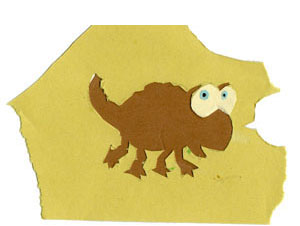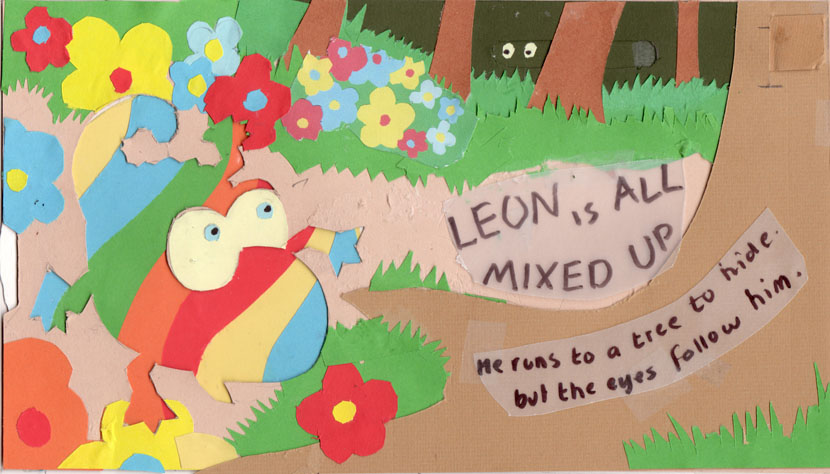ABOUT THE IDEA
 For me, when it comes to novelty books, it’s all about the phrase ‘less is more’. When I was playing about with scissors and paper one day, I realised that with a simple pull-tab I could change the colour of a chameleon so that he became camouflaged in the background colour. All I had to do was cut out the shape of Leon in some coloured paper (in this case sandy yellow) then drag behind it a tab made of his current colour (brown) and some of the sandy yellow. The effect was simple and quite magical and the whole book arose from this discovery.
For me, when it comes to novelty books, it’s all about the phrase ‘less is more’. When I was playing about with scissors and paper one day, I realised that with a simple pull-tab I could change the colour of a chameleon so that he became camouflaged in the background colour. All I had to do was cut out the shape of Leon in some coloured paper (in this case sandy yellow) then drag behind it a tab made of his current colour (brown) and some of the sandy yellow. The effect was simple and quite magical and the whole book arose from this discovery.
ABOUT THE PICTURES
Creating the pictures for a novelty book involves first of all deciding what kind of paper engineering you need, then where the novelty part can fit on the page (which is partly defined by the mechanics which are hidden away underneath the page). For example, below is the rough version of the spread where LEON gets all mixed up about which colour to become. I decided that a wheel which rotated colours throughout his body would best show his confusion. The wheel has a maximum size as it has to fit inside the borders of the page and Leon’s changing colours must appear with the wheel, so already the location of Leon on the spread is being set. The centre of the wheel on which it rotates has to be hidden behind Leon’s left eye so you can see how the mechanics are informing the design layout of the page.

Once I’ve laid everything out in a black and white sketch I make a working dummy of the page. This involves cutting the shape of Leon out of the background card (onto which has been stuck all the coloured paper) with the aid of a sharp scalpel (which doesn’t stay sharp for very long). With all the cut out shapes and stuck down bits and pieces, everything starts to get rather messy but eventually you arrive at an approximation of how the finished working spread will appear in the book.